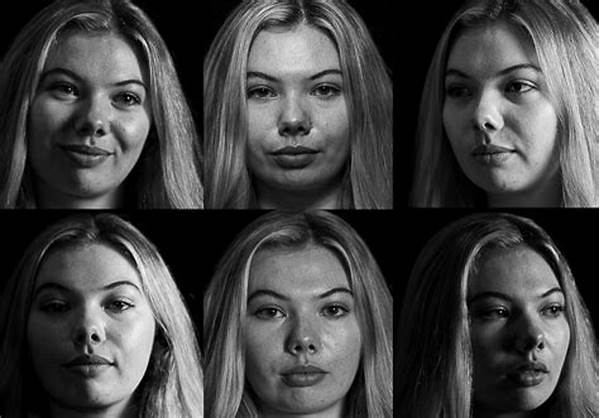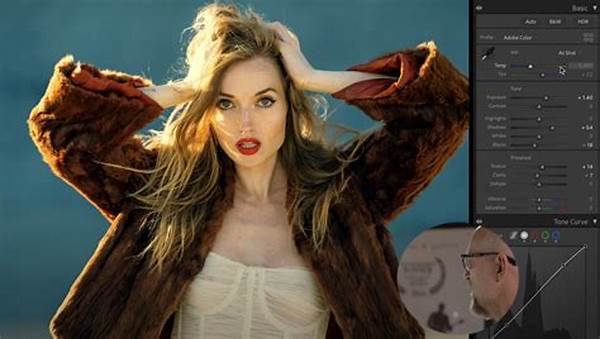Hey there, fellow photography enthusiasts! Today, we’re diving into the world of indoor lighting techniques for portraits. If you’ve ever struggled with getting that perfect shot indoors or found yourself cursing under your breath because your portrait looks too flat or shadowy, you’re in the right place. Indoor lighting can make or break a portrait, and with a few nifty tricks up your sleeve, you can elevate your photography game to new heights. Let’s embark on this illuminating journey together!
Read Now : Creating Focal Points In Art
The Magic of Natural Light
One of the most underrated indoor lighting techniques for portraits is using natural light. Yes, you read that right – the sun is your best friend! Position your subject near a window, and voila, you have an instant light source that’s soft, warm, and perfect for flattering portraits.
Consider the time of day too. Morning light tends to be softer and cooler, while late afternoon offers a warm, golden hue. These subtle variations can add depth and mood to your portraits. Reflectors can also be your saving grace, bouncing natural light back onto your subject and reducing harsh shadows. This simple technique can create stunning, professional-looking portraits without the need for fancy equipment.
The key with natural light is experimentation. Try different angles, distances, and even curtain thicknesses to manipulate the light to your liking. Remember, every environment is different, so take the time to explore how light interacts with your specific indoor space.
Mastering Artificial Lighting
Artificial lighting offers a wealth of indoor lighting techniques for portraits. Consider softbox lights—that magical tool that softens intense shadows and highlights, creating a more even and forgiving light. Softboxes mimic natural window light and can be adjusted for intensity and angle, making them versatile for any portrait setting.
Ring lights are also fabulous for achieving that coveted beauty lighting effect. By placing a ring light around your camera, you create a flattering glow that minimizes shadows and highlights facial features in a balanced way. It’s a game-changer for headshots and beauty portraits.
Experiment with different light setups too. For instance, go for a typical three-point setup: key light for the main light, fill light to manage shadows, and a backlight for depth and separation from the background. Mixing and matching these artificial lighting techniques can yield truly unique and striking results.
Balancing Light and Shadow
The art of indoor lighting techniques for portraits isn’t just about light; it’s also about the shadows. Creating depth in your portraits involves careful consideration of shadows, adding a sense of dimension and drama.
Think of shadows as your invisible brush strokes, adding a layer of complexity to your portraits. You can adjust your lights to create more pronounced shadows for a theatrical look or soften them for a more subtle effect. Experiment with the positioning of your lights—side lights can create depth, while overhead lights can highlight cheekbones and chin for a striking effect.
Also, play around with diffusers and bounce cards to control how light falls on your subject. The more you manipulate your light sources, the more dynamic your portraits will become. Remember, it’s not just about lighting your subject, but crafting a compelling visual story through light and shadow.
Creating a Timeless Portrait
When it comes to indoor lighting techniques for portraits, achieving a timeless look is all about balance. Too much light and you risk washing out your subject; too little, and your portrait might seem gloomy. Aim for that golden mean where your subject stands out in a crisp, clear, and captivating manner.
Read Now : Optimize Photo Backdrop Sharpness
Introduce layers in your lighting setup to create interest and dimension. Accent lights, for instance, can add a touch of creativity without overpowering the main light. This subtle layering technique makes your portraits feel more natural and engaging.
By meticulously controlling each light source and considering every possible reflection and shadow, you can create a portrait that doesn’t just capture a moment but tells a story. Every adjustment in lighting is a new opportunity to convey emotion and personality in your portraits.
Perfecting Your Style
Let’s chat about nailing your own style through indoor lighting techniques for portraits. The key takeaway here is that there’s no one-size-fits-all solution. It’s all about what vibes with you and the story you want to tell with your camera.
Explore ambient light—a lamp here, a fairy light strand there—mixing with artificial lights to craft moody, artistic environments. Go wild with colors by popping color gels over lights for creative shots full of character. Finding your groove means being bold enough to try, fail, and try again until you find what feels right.
Your indoor lighting techniques for portraits will evolve with your skills and taste. Remember, every portrait is an opportunity to explore and innovate. With patience and practice, you’ll carve out a distinctive style that speaks for itself and amazes everyone who catches a glimpse!
Conclusion of a Photographic Journey
So there you have it, a handy guide to mastering indoor lighting techniques for portraits. Whether you’re harnessing the warm glow of morning sun or concocting the perfect artificial lighting setup, each choice plays a pivotal role in shaping the final masterpiece.
With a blend of excitement and creativity, indoor lighting becomes an ally that enhances your storytelling capabilities. As you practice and experiment with different techniques, you’ll discover the nuances that make your portraits captivating and timeless.
Ultimately, your approach to indoor lighting techniques for portraits will grow and shift, just like your unique photography style. Embrace the learning process, find what works for you, and keep pushing the boundaries. The world of indoor portraiture is your oyster, waiting for you to uncover its many shimmering pearls.



